The name Edgar Allan Poe is known to everyone who has ever opened a school literature textbook, been fascinated by the mystical, or simply heard the ominous line:
“Once upon a midnight dreary, while I pondered, weak and weary…”
This name seems to imprint itself on the mind — like the cold breath of foggy cemeteries, the rustle of raven wings, the whisper of pages in ancient books. Poe is not just a writer. He is a myth, a symbol, a shadow on the wall of all American literature.
For nearly two centuries, critics have debated him, goths have worshiped him, filmmakers have been inspired by him, psychiatrists have quoted him, and young poets have copied him. He entered the annals of history as the “father of the detective story”, the founder of psychological horror, a master of gothic literature, and the darkest “romantic” in the world.
His biography resembles his own stories — sharp, tragic, filled with symbols and unanswered questions. The death of his mother, orphanhood, quarrels with his foster father, a strange marriage to his cousin, constant poverty, and a mysterious death that still sparks debate. As a man, Poe lived in the shadows; as a writer, he gave us the tools to understand that darkness.
But who was he really? A cursed poet or a cold mathematician of rhyme? A madman or a pioneer of the depths of the human mind? Why, nearly two centuries later, is he still read, adapted into films, quoted, and... feared?
Today, we will walk in Edgar Poe’s footsteps. Without clichés, without unnecessary pathos, but with due respect to the darkness he illuminated with words. Welcome to a world where the horrors of reality are sometimes scarier than any fiction — and that is what made Poe great.
“Poe is the father of all who write about darkness. He proved that the scariest monster is the human soul, torn between reason and madness.” — Stephen King
Из пелёнок — в бездну: как рождался По
Geniuses rarely have a happy childhood — and Edgar Poe, unfortunately, was no exception. He was born on January 19, 1809, in Boston, into a family of traveling actors. This fact alone cast a certain shadow on the boy’s life: poverty, frequent moves, instability — all of this became his reality from his earliest years.
When Edgar was two years old, his mother died of tuberculosis. By that time, his father had already disappeared from the family’s life, leaving the children to fate. The infant Poe was taken in by a wealthy family from Richmond — John and Francis Allan. They gave him their surname (as a middle name), the love of a foster mother, but not the love of a foster father. John Allan was a strict, pragmatic man who completely failed to understand the boy’s passion for literature. He dreamed of seeing Edgar as a business heir, but instead he got a poet.
The young Poe grew up in comfort, but not in harmony. He was constantly torn by inner conflicts: a love for art versus the pressure of the rational, wealthy, but cold world of John Allan. These conflicts only intensified over time.
In 1826, Poe enrolled at the University of Virginia — prestigious and strict. He was a brilliant but restless student. He wrote poetry, painted, participated in literary debates, but... he didn’t fit in. Lack of money, which Allan refused to send him, forced Edgar to gamble, accumulate debts, barely eat, and ultimately leave the university after just one year.
The First Step into Eternity: “Tamerlane” and Beyond
But it was during these years that he began to try his hand at writing. In 1827 — at only 18 years old — Poe anonymously published his first collection of poems:
“Tamerlane and Other Poems” (Tamerlane and Other Poems). The title page bore only the words: “By a Bostonian”.
This was a quiet, almost unnoticed attempt to make a name for himself, but an important milestone within. Poe himself later disliked returning to these poems, calling them “immature,” yet the main themes of his future work already sounded there: the sense of loss, the tragedy of the mind, the struggle against fate and self, and the melancholic beauty of death.
“Tamerlane” is a poem about a ruler who renounced love for fame and power, only to realize the cost of this bargain before his death. Something personal, don’t you think? Critics later called this poem a confession of the young Poe, written in metaphor.
Besides “Tamerlane,” the collection included poems such as “A Dream,” “Imitation,” and “Romance” — all imbued with melancholy, longing for the unattainable, and an eternal search for light in the darkness.
A fact with a touch of irony: It is believed that only about 50 copies of the first collection Tamerlane and Other Poems were printed, and for a long time they were almost completely lost. Today, a rare original copy is valued at hundreds of thousands of dollars. Irony? The collection that no one noticed then now costs more than Poe’s entire lifetime.
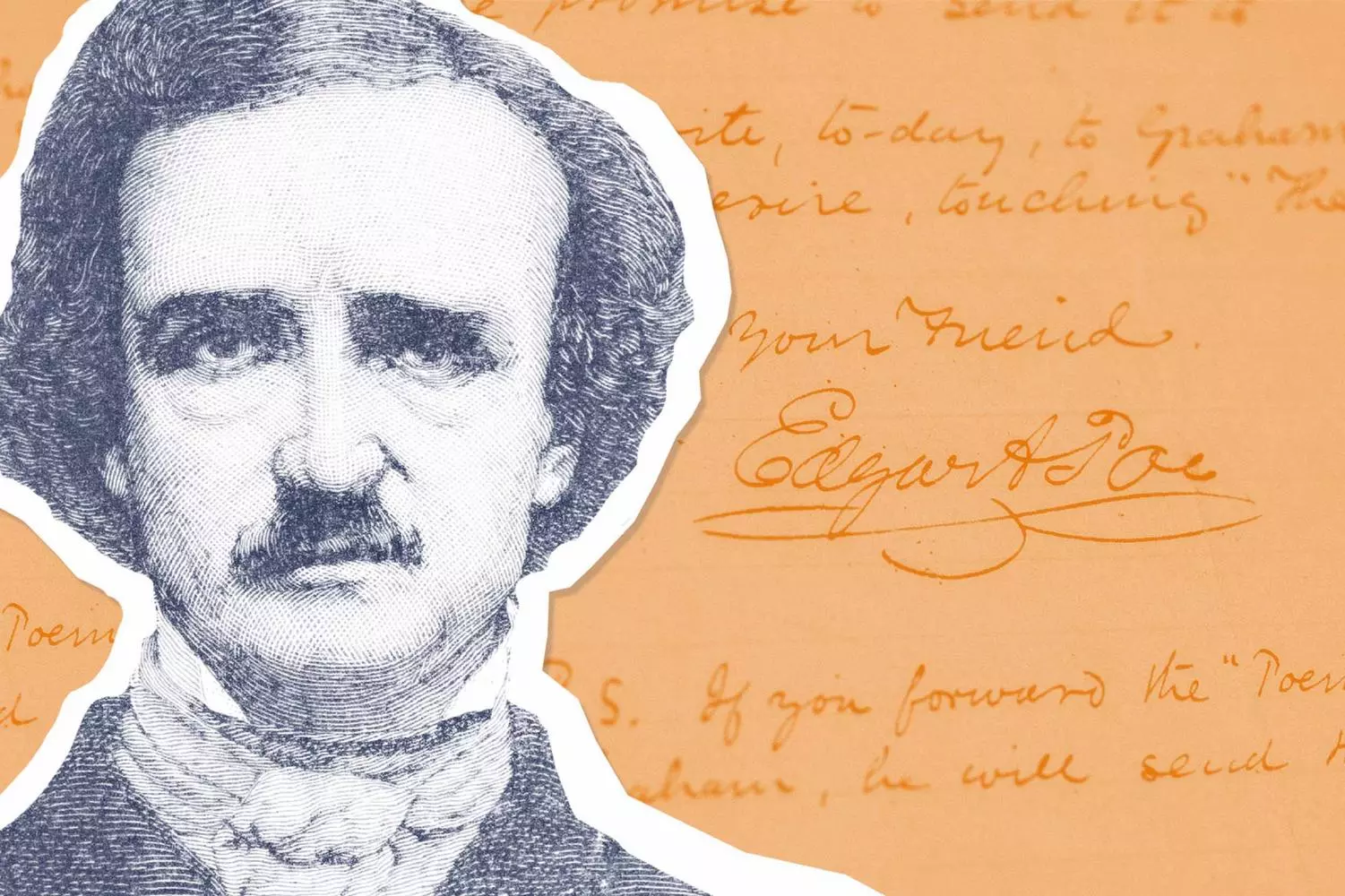
Poe in Uniform: When the Genius Marched to the Beat
Edgar Allan Poe had a complex and restless character. He struggled between ideals and reality, rebelled against authority, and searched for his place in the world. After failing at the University of Virginia, where he sank into debt and disappointment, the young Poe made a move that seems paradoxical: he joined the army.
In 1827, at the age of 18, hiding from creditors and in conflict with his foster father John Allan, Edgar Poe enlisted in the U.S. Army under the assumed name Edgar A. Perry. He lied about his age (claiming to be 22) and place of birth, signing up for the First Artillery Regiment.
Surprisingly — he actually liked the military discipline. For the first time in a long while, his life gained clear structure, defined goals, and stability. Poe served at Fort Independence and Fort Moultrie, showed diligence, and quickly rose through the ranks. Within two years, he reached the rank of artillery sergeant major — an unprecedented career leap for a newcomer and an “intellectual.”
However, neither drill nor military life silenced the poet in him. During these years, he continued writing and even published his second poetry collection — “Al Aaraaf, Tamerlane and Minor Poems” (Al Aaraaf, Tamerlane and Minor Poems, 1829). Critics received it coldly, but it already contained the seeds of what would later make him the “poet of darkness.”
- After two years of service, Poe unexpectedly decided to take another step: to enroll in the West Point Military Academy — an elite institution for future officers. He hoped the military career would give him status and respect in the eyes of his foster father. Allan agreed to help, and in 1830 Edgar found himself within the walls of West Point. But things quickly went awry.
- Poe started with enthusiasm: he excelled at exams, especially languages and math, but soon lost interest. He felt out of place in an environment that valued blind obedience and discouraged creativity. Another problem: during his service, his beloved foster mother Francis Allan died. This event deeply shook him and finally distanced him from John Allan.
- Disappointed, he began sabotaging his studies: skipping classes, breaking discipline, accumulating reprimands. Eventually, Poe was officially expelled for “failure to fulfill military duties” less than a year after enrollment.
“Honor is not something given in formation nor checked by regulations. It is either within or it is nowhere.” — Edgar A. Poe (from a letter to a friend, 1831)
Within West Point, Poe was known as the “poet in the barracks”. He composed satirical verses about commanders and instructors — so sharp that rumors spread that one officer filed a transfer request after reading an “anonymous” poem clearly aimed at him.
Edgar Poe’s military career was short but significant. It did not make him an officer, but it strengthened his spirit, taught him discipline — albeit fleeting — and provided vivid material for future stories. Ironically, it was military drill that helped Poe realize that his battlefield was not a dusty parade ground, but the page, the pen, and the eternal struggle with the fears that live inside every person.
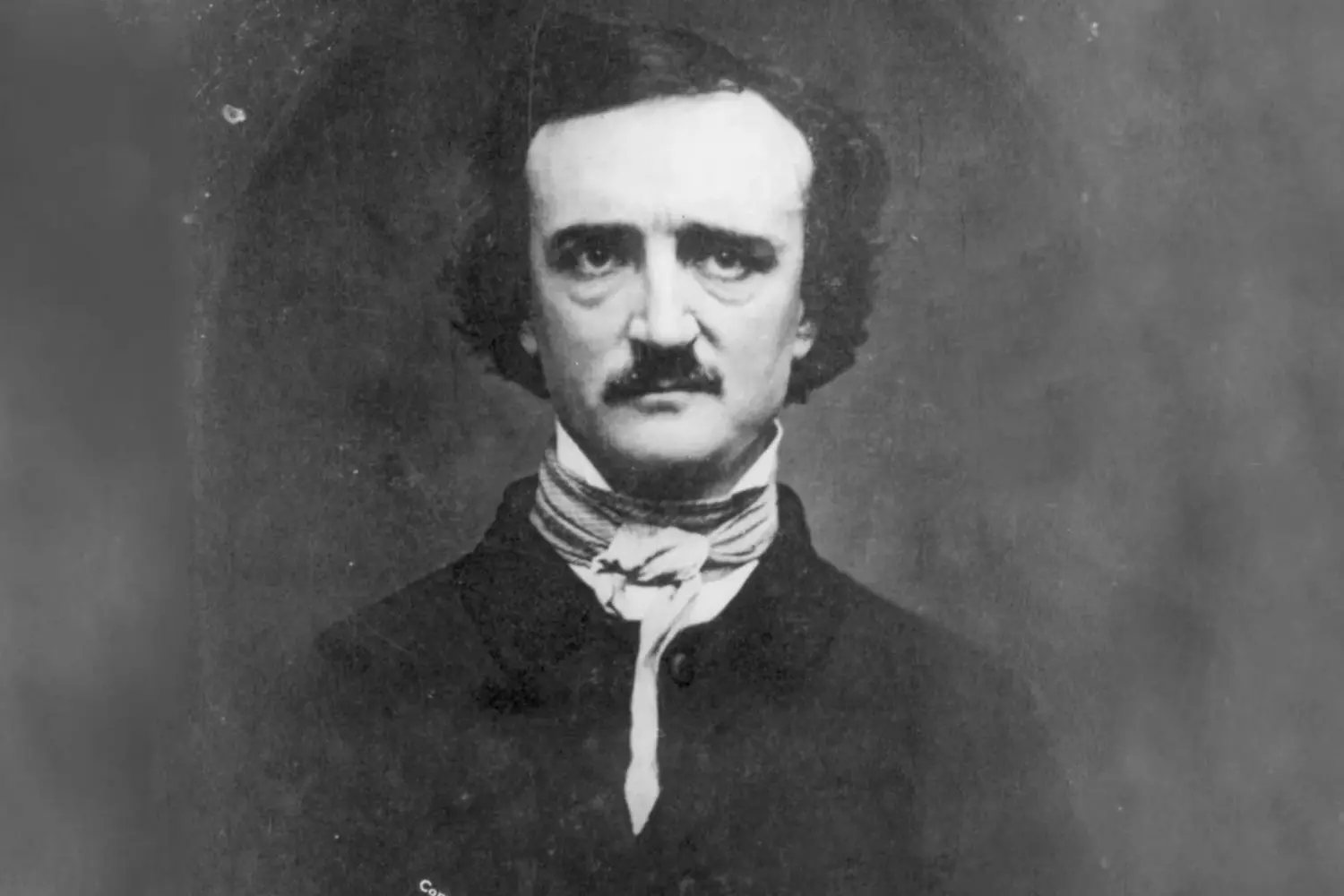
Trading the Sword for the Pen: Poe as a Soldier of Literature
If the army did not accept Poe, literature seemed to reach out to him on its own. After being expelled from West Point in 1831, he was practically penniless: no family, no fortune, no certain future. But he still had the most important things — his pen and the inner darkness that was eager to escape. It was at this moment that his path as a professional writer began — thorny, poor, but truly fateful.
- 01. The path from poetry to prose
At first, Poe continued trying to establish himself as a poet. In 1831, he published a collection titled "Poems of Edgar A. Poe", raising money from his West Point classmates. It was a quiet, almost unnoticed release, but the future themes were already present — melancholy, longing, philosophy of death and love. However, by that time, the American literary market was harsh on poets. To survive, one had to write prose — quickly, sharply, and preferably terrifyingly.
Poe began crafting stories, submitting them to magazines and literary contests. One of his first serious successes came in 1833, when his story "MS. Found in a Bottle" won the prize of the Baltimore Saturday Visiter magazine and drew attention to his name. - 02. Work in magazines: the pen serving the era
Poe gradually realized that publishing was not only a path to fame but also a way to earn money, albeit modestly. He began working as an editor for various magazines, and it was there that his character shone through: sharp, inconvenient, uncompromisingly honest.
- In 1835, he joined the Southern Literary Messenger (Richmond), initially as an assistant, later as editor-in-chief. There he published stories, poetry, critical articles, and reviews, quickly turning the publication into one of the most widely read in the South. Under his leadership, the magazine’s circulation doubled.
- However, Poe was not only prolific but difficult. His caustic reviews, in which he ruthlessly tore apart weak prose and poetry of his contemporaries, earned him both fame and enemies. He became known as America’s first serious literary critic, with clear aesthetic views. But also as a man who was hard to work with.
- Poe was fired, then resigned, then rehired. He worked at Burton’s Gentleman’s Magazine, then Graham’s Magazine, and later at Broadway Journal, where for a short time he was even a co-owner.
Despite the constant turnover, these years became his golden decade: he created his most iconic stories and articles, including “The Murders in the Rue Morgue” — the first detective story in history, “The Fall of the House of Usher,” “Ligeia,” and “The Masque of the Red Death.” - While working at Graham’s Magazine, his annual salary was about $800 — quite good money for that time. However, due to his tendency toward alcohol, frequent conflicts, and intense self-sacrifice, he failed to maintain stability and lost his job again, this time due to disagreements with the publishers.
A quote that sums up Poe: “I do not seek truth, I seek style. Truth is for philosophers, style is for immortality.” — Edgar A. Poe, from a letter to Richmond
The beginning of Poe’s literary career was not the romantic tale of a genius immediately recognized. It was a harsh struggle for survival, daily labor, difficult compromises, but also triumphs that forever changed American literature. He opened a new path — literature as both challenge and art, where fear, death, and longing become a form of truth.

In the Web of Cities: New York, Philadelphia, and the Struggle to Survive
After a short but bright period in Richmond, where Edgar Poe gained fame thanks to the Southern Literary Messenger, fate threw him into the heart of American urbanization — to New York and Philadelphia. These years — from 1837 to 1844 — became not only a time of literary formation but also a true test of endurance. No peace, no money, no certainty about tomorrow — only talent, hunger, and the eternal search for a way out of the dead end.
In 1837, Poe moved to New York with his wife Virginia and mother-in-law Maria Clemm. By then, the city already resembled a boiling cauldron of ambitions, where one could either soar or disappear.
But Poe did not know how to adapt to the vast metropolis. His texts were rejected by magazines, his connections were weak, and he found himself in real poverty. Sometimes the family didn’t even have money for firewood and food. In one of his letters, Poe admitted:
“We have been eating only bread and water for three days. I no longer ask for fame — only that Virginia might breathe without pain.”
Nevertheless, he did not give up. In 1838, he published The Narrative of Arthur Gordon Pym, his first and only novel. It was a strange mixture of sea adventure and horror, inspired by Robinson Crusoe and his own nightmares. The novel was received coldly, but his name was already noticed.
Philadelphia — literary dawn amid poverty
By 1839, Poe moved to Philadelphia, where he settled for several years. It was here that he began to rise as a serious writer. He took a job as editor at Burton’s Gentleman’s Magazine, and later at Graham’s Magazine. These magazines were quite popular, and working there gave Poe some stability.
During this time, he created: “The Fall of the House of Usher,” “The Masque of the Red Death,” “Ligeia,” “The Tell-Tale Heart,” “The Black Cat.”
These were masterpieces of gothic and psychological fiction — incredibly deep, chilling, and innovative. He elevated the short story to a new level, turning it into a form of art.
However, Poe’s financial stability was illusory. He still earned pennies for his stories, his criticism was feared and hated, and publishers rarely paid on time. Moreover, Virginia’s illness, showing signs of tuberculosis, worsened the situation. The house was cold, food scarce, and Poe often suffered from depression and alcoholism.
- 01. Storm of ideas and hope for “his” magazine
Philadelphia gave Poe a dream — to create his own literary magazine, free from the tastes of editors and the pressure of sponsors. He even came up with names — The Penn Magazine, and later The Stylus. In every letter to publishers and friends, he mentioned this dream: “I want to publish a magazine where truth will cut like a knife, and style will shine like a mirror.” But Poe couldn’t find investors. His reputation was too controversial: brilliant, but considered difficult, unpredictable, a “dark” man. - 02. Return to New York — with “The Raven” on his shoulder
In 1844, Poe moved again to New York — this time with a somewhat more famous name. He continued to struggle for recognition and survival. There were moments when the family was on the brink of eviction. But it was in that year he wrote the greatest poem of his life — The Raven, which soon made him famous across the country.
The years in New York and Philadelphia were not romantic but survival of a genius. This is a story not only about literature but about love, pain, hunger, and a strength of spirit that, despite everything, did not allow Poe to vanish from the world of art. He did not simply write — he clawed out his immortal line from the rubble of his own life.
At the Height of Genius: ‘The Raven,’ Sudden Fame, and a Dance with Darkness
In the history of American literature, there are few moments when a single line, a single poem, suddenly bursts into the cultural consciousness and changes everything. For Edgar Allan Poe, that moment came in January 1845. His poetic manifesto — The Raven — was published in the New York magazine Evening Mirror, and the nation began to speak. Some whispered, some sang, some tried to understand where this dark poetic magic came from, but ignoring it was impossible.
“Once upon a midnight dreary, while I pondered, weak and weary…”
These lines were known even by those who had never read poetry. With The Raven, Poe became a star. A real one. And here lies the irony — just when he gained recognition, the “imp of the perverse,” as he later called it, awoke within him.
The Raven: not just a poem, but America’s dark symbol
The Raven is more than a poem. It is a symbol of pain, obsession, longing, and loss. It is a fusion of form and content, rhythm and horror. Poe approached creating the poem almost like a mathematician — he later wrote the essay “The Philosophy of Composition”, claiming he calculated every line down to the comma. But the result was not dry calculation, but pure poetic hypnosis.
- Poe wrote that he sought the most melancholic word in the English language — he chose “Nevermore”. The most tragic theme — he chose the death of a beloved. The creepiest bird — he chose the raven. From these elements, he composed a tragedy that became a national cultural nerve.
- After publication, Poe became in demand. He was invited to readings, signed contracts, and was paid — finally! However, like everything in Poe’s life, this fame was two-faced. People recognized him on the streets, but he was still paid little. His fees were insignificant compared to his influence.
The imp of contradiction: the enemy within
Around the same time, in both his work and personal life, a force began to operate that Poe later described in the essay “Imp of the Perverse” — the imp of contradiction. This is the idea that inside every person lives a demon who makes them act against logic, destroy what is most valuable, do the worst simply because it is forbidden.
“We do terrible things not because they are inevitable, but because we cannot bear not doing them.”
Poe believed that a person is not always driven by reason or desires. Sometimes — by pure self-destruction.
And he proved it himself. Instead of securing his status as the number one poet, he quarrelled with editors, accused everyone of lying, reproached plagiarism, and abandoned promising projects. Virginia continued to fall ill. Poe drank more often, becoming sharp and unpredictable.
Along with The Raven, he gained not only fame but also his double — the poet cursed to be heard but not understood.
Despite success, Poe could not extract financial stability from The Raven. His name was respected — but without love. Critics were merciless, his texts too dark, and Poe himself uncomfortable. He was not invited to literary circles, and he despised them for their snobbery. He continued writing: “MS. Found in a Bottle,” “The Murders in the Rue Morgue,” “Eulalie,” “The Bells” — all written during his “greatest rise.” But it was already clear: Poe’s inner flame was beginning to burn him out.
Interesting fact: After the publication of The Raven, Edgar Allan Poe’s name became so popular that a businessman proposed creating… a board game based on the poem. The game required guessing words by the first letter in The Raven’s lines. Poe refused — he considered it sacrilege.
The years following The Raven were a time of triumph without celebration, the peak of fame that brought no happiness. And the tragedy of a genius who had to carry his darkness without light in his wallet, house, or soul. But in this duality lies Poe’s depth. He was not just a writer. He was one who listened to his demons and recorded their voice so that we could meet them — and survive.
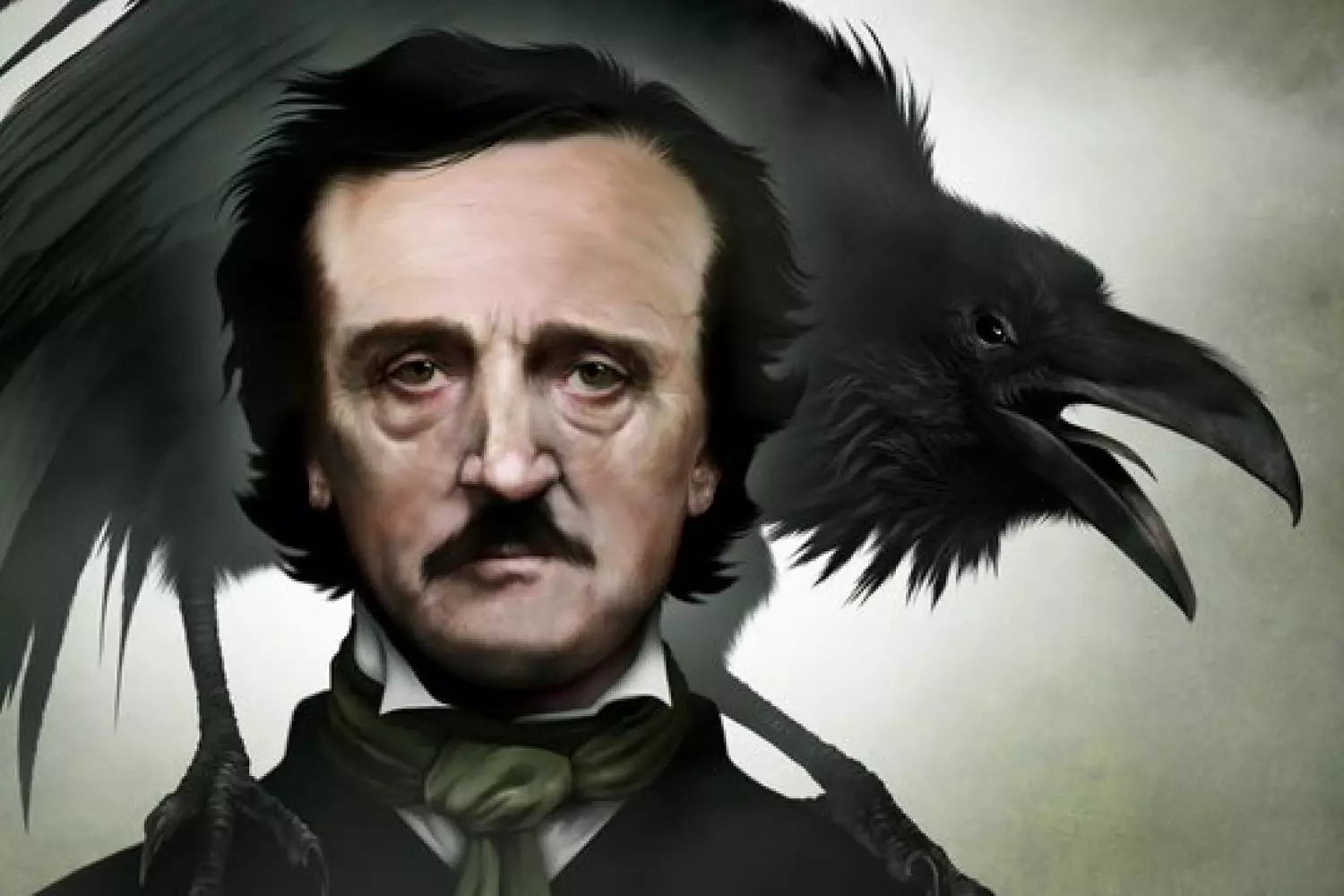
The Final Act of Tragedy: Love, Loss, and the Road to Nowhere
By the time Virginia Clemm — his cousin, muse, wife, child, and angel all in one — began to fade away, something in Edgar Allan Poe finally broke. Their marriage was scandalous and controversial from the start: she was just 13 when he married her. Yet, according to many contemporaries, their relationship was surprisingly tender and almost platonic. Virginia became Poe’s anchor — his “Lenore,” his “Annabel Lee.”
Since the late 1830s, Virginia suffered severely from tuberculosis. Poe tried to hold himself together, earning what he could, but money barely covered medicine and warmth in the room. They often froze in winter. Once Virginia was singing when she suddenly coughed violently — blood on her lips was the prelude to her end.
She died in January 1847 at the age of 24. Poe was left alone — completely alone.
“You were my life, you have gone, and with you went my soul.” — he wrote in “Annabel Lee.”
After his wife’s death, Poe sank into a deep depression. Panic attacks began, his dependence on alcohol increased, and according to some biographers, opiates too. He became more irritable, eccentric, unpredictable, yet — surprisingly productive. It was during this time that he completed Eureka — a philosophical poem attempting to explain the structure of the Universe.
Interesting fact: In one of the houses Poe lived in Philadelphia, you can still see the keyhole through which he watched his dying wife, afraid to leave her alone. The house has been turned into a museum and is considered one of the most “haunted” literary places in the USA.
An unfulfilled marriage and the ghost of happiness
- Amidst his grief, Poe unexpectedly resumed correspondence with his long-time love — the poet Sarah Helen Whitman. They grew close, became engaged, and he even vowed to abstain from alcohol. But Poe could not fight the inner “imp.” He relapsed, and Sarah broke off the engagement.
- This was the second blow. In despair, Poe wrote: “I am doomed. My whole life is a chain of curses.”
- Later, in 1849, Poe made another attempt — this time with Elmira Shelton, his first love from youth. They also announced an engagement. But the wedding was never to be.
In autumn 1849, Poe left Richmond for Philadelphia — according to most sources, to settle business with a publisher. Then he was supposed to go to New York and later return to Elmira to marry. But... he never arrived.

Graveyard Mystery: Poe's Death and the Man in Black
Edgar Allan Poe died as he lived — mysteriously. His final days are full of blanks, and his death became the last chilling chapter of his biography. To this day, no one knows exactly what happened to Poe in those days between his departure from Richmond and his discovery on the streets of Baltimore. No single theory explains it all at once: he was sober, no, he was drunk, no, he was poisoned, beaten, ill, murdered, or simply overwhelmed by his own genius.
- 01. Dressed not in his own clothes
When Poe was found near the “Gunner’s Hall” tavern in Baltimore on October 3, 1849, he was wearing strange, worn-out clothes — not the ones he left Richmond in. He wore a shabby wool suit, a dirty shirt, and a battered straw hat. He was delirious, unable to explain what had happened to him, and kept repeating the name “Reynolds” — a person whose identity remains unknown.
He died four days later, on October 7, 1849, at the Washington College Hospital. The doctor who observed his last hours noted in the report: “The patient was extremely agitated, wandering mentally, unable to express himself clearly.” His last words in the hospital, recorded by a nurse, were: “Lord, help my poor soul…”
The cause of death remains a mystery. Theories ranged from alcoholism, rabies, syphilis, poisoning, even political kidnapping as part of a “cooping” (electoral fraud) scheme. But none explains everything. And perhaps that is the most Shakespearean ending to his life: he left more questions than answers. - 02. A funeral without words
Poe’s funeral was as faceless as his death. On October 8, he was buried at the cemetery near the Westminster Presbyterian Church in Baltimore. The farewell was brief, almost secretive. The ceremony took place under pouring rain. Only 7 people attended — including the gravedigger. No priest, no music, no speeches.
“No flowers, no farewell poem — just wet earth and a coffin lowered into a cold grave,” recalled one of the few witnesses.
There was no tombstone on the grave — only a numbered stone. Later, when friends tried to order a monument, it was accidentally destroyed during transportation. It seemed symbolic: Poe himself, buried without a name, like a character from his own gothic tale.
The Legend in Black: The Phantom Who Came Every January 19
But the mystery did not end there. Starting in 1949 — exactly one hundred years after Poe’s death — every January 19 (his birthday), a mysterious man dressed in black came to Edgar Poe’s grave in Baltimore.
He appeared at night, wearing a long black cloak and a hat that covered his face. He brought to the grave:
- A bottle of cognac;
- Three scarlet roses.
He stood silently for several minutes, raised a glass — and vanished into the darkness without leaving a trace.
This ritual repeated year after year. Sometimes observers tried to photograph him, but the “man in black” avoided cameras, changed routes, and arrived earlier. Surprisingly, no one ever learned his name.
After 2009 — the 200th anniversary of Poe’s birth — the visits stopped. Perhaps the last true “admirer” passed away. Perhaps the tradition had run its course. But the memory remained.
Some speculate that the visitor was a family member — father, then son, then grandson. Others believe it was an actor, a fan, a literary enthusiast, or... Poe himself, returning to make sure he was not forgotten.
Even after death, Edgar Poe remains the author of his last and most sinister story — his own life. He vanished into darkness — but left a candle burning there, lit every year by a stranger. Only he and Poe knew why. Edgar Allan Poe did not just die. He dissolved — into legend, poetry, and myth. His life became a mirror of his poetry: beautiful, terrifying, eternal, and lonely.
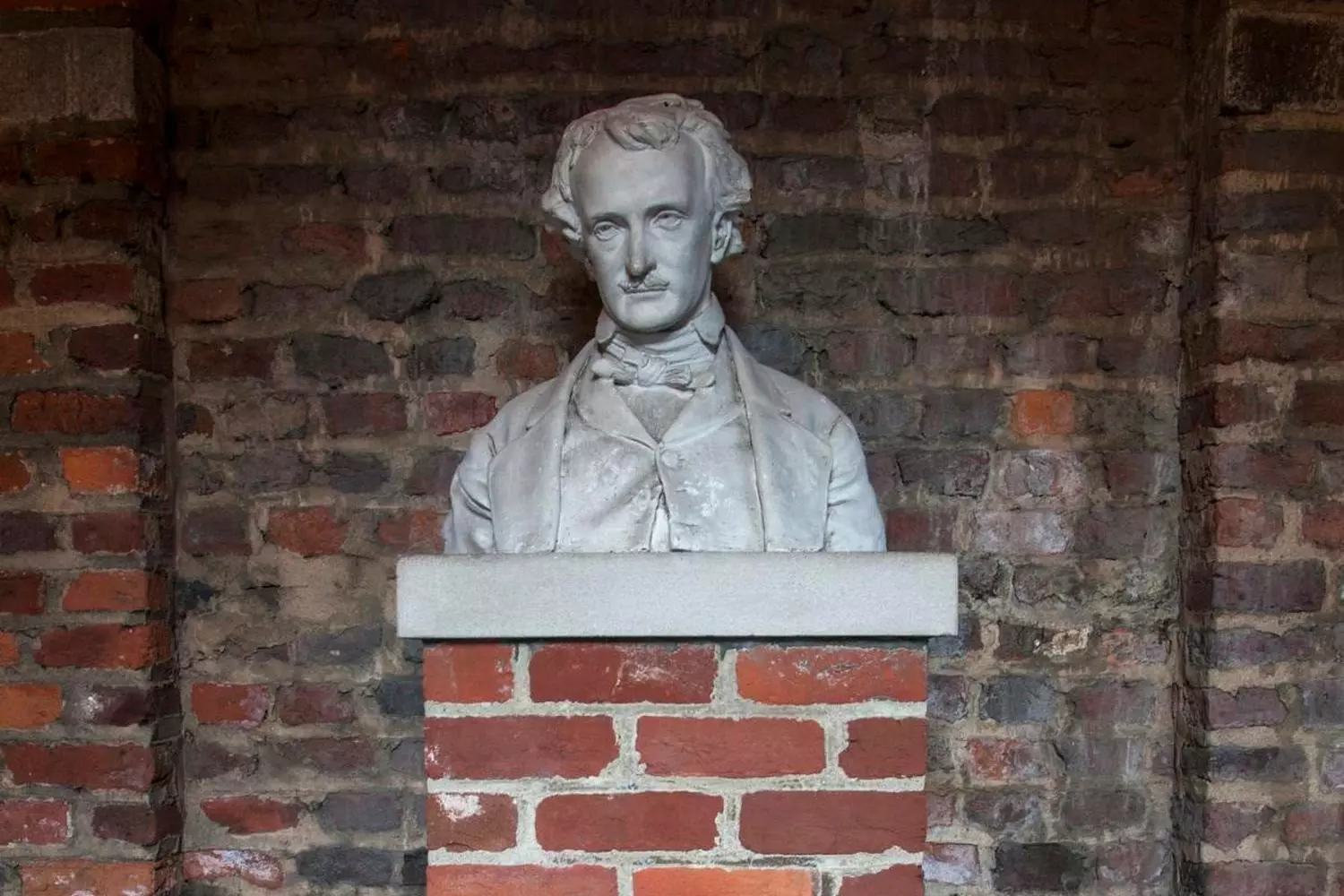
The Inner World of Edgar Poe: The Enigma of a Genius and the Complexity of Character
Edgar Allan Poe is not just a name on textbook pages or gothic anthology covers. He was a man of deep, contradictory, and sometimes painful nature. His personality still intrigues and raises many questions: who was this man — a tragicomic romantic, a martyr of fate, or a cold analyst of his own darkness?
- 01. Character: sharp mind and vulnerable soul
Poe possessed a sharp, almost prophetic mind. He could see and feel what others could not — a strange beauty in darkness, tragedy in the mundane, mystery in ordinary things. This gift made him an exceptional writer, but it also turned life into a constant trial.
Poe was impulsive, emotional, sometimes gloomy. He was often drawn to solitude but at the same time needed recognition and love. He could be charming and sincere in communication, yet personal dramas and losses left deep scars. - 02. Worldview: between rationality and mysticism
In Poe’s work and life, there was a clear struggle between cold rationalism and a yearning for the inexplicable and mystical. He studied philosophy, knew the classics, admired science, yet deeply believed in the power of imagination and the subconscious.
His works are like a mirror reflecting the fears and secrets of the human soul. His attitude toward death, loss, madness — these were not just themes for stories but parts of his inner dialogue.
“When a man becomes a slave to his fears, he ceases to be himself,” Poe once wrote in personal correspondence. - 03. Battle with demons
One of the most painful themes in Poe’s life was his relationship with alcohol. Many myths surround his story: some say he was a chronic alcoholic, others claim he did not drink at all. The truth probably lies somewhere in between.
Poe indeed struggled with the lure of alcohol — especially during periods of depression and hardship. Alcohol was both a consolation and a curse to him. He understood the destructive potential of this dependence but sometimes fell into its trap.
In one letter he wrote: “Wine is like a double-edged sword: it opens the soul but can destroy the body.”
Poe repeatedly tried to publicly renounce alcohol and even kept diaries of his struggles. However, harsh circumstances, personal tragedies, and social pressures left him with few chances.
This was Edgar Poe — a complex, multifaceted man, deeply engaged in a battle with himself. His character and worldview left an indelible mark on world literature, and his personal demons made his work truly alive and profound.
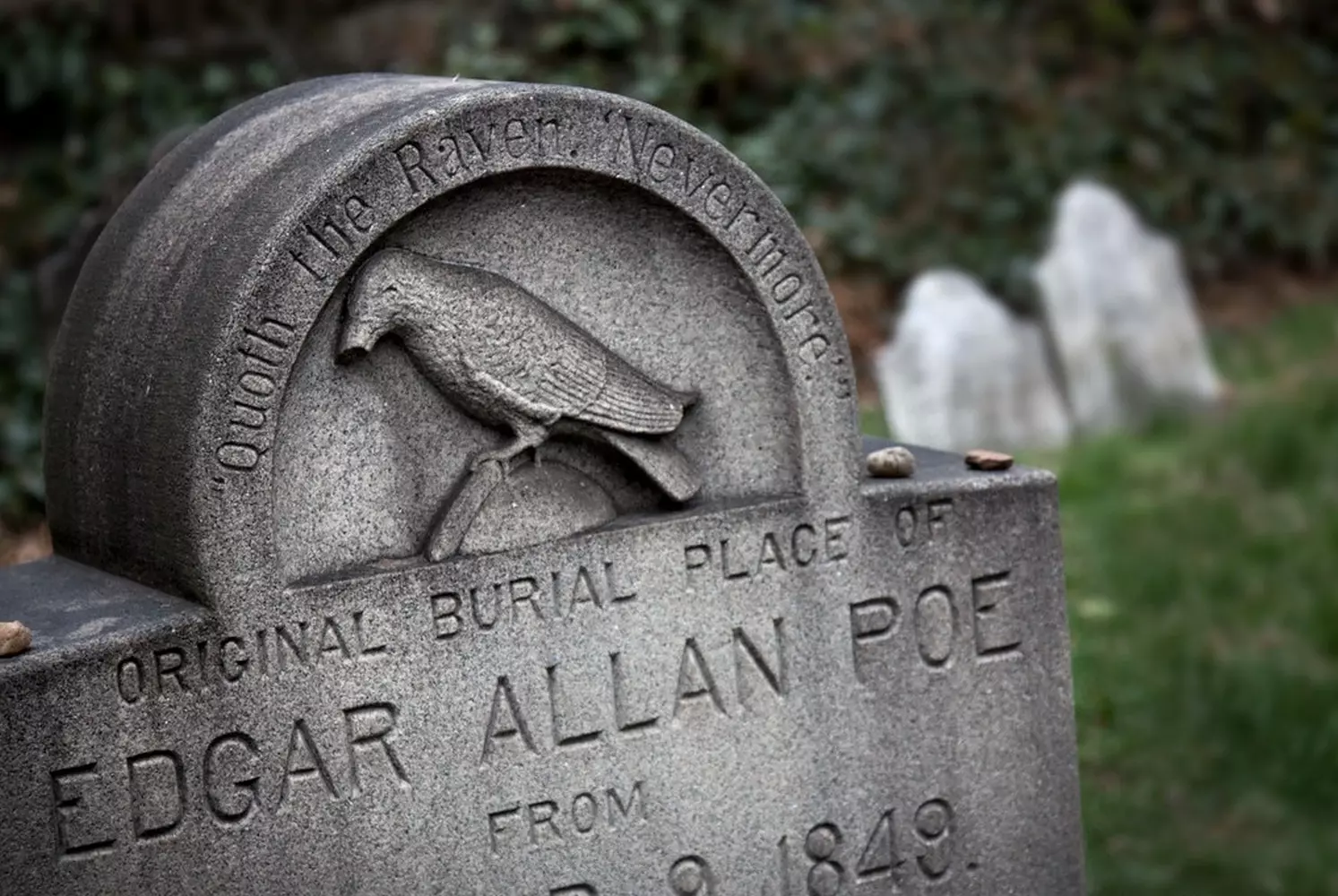
Literary Legacy: Fear, Symbols, and Immortality
Edgar Allan Poe — a name that sounds like magic in the world of literature. He didn’t just leave behind books — he laid the foundation for several key genres, shaped the language of fear and symbolism, and became the immortal voice of the dark corners of the human soul. His legacy is not just stories and poems, but an entire universe that continues to live on and influence generations.
- 01. Founder of whole genres
Few realize that Poe is considered one of the pioneers not of just one, but several genres:
- Gothic prose
Dark, atmospheric, rich with symbols and unsettling imagery. Poe managed to turn darkness into a work of art where every sound and shadow carries meaning. His stories “The Fall of the House of Usher” and “The Black Cat” are classics that set the standards of Gothic prose. - The modern detective story
Poe is rightly credited as the precursor to Sherlock Holmes and all detectives who followed. His story “The Murders in the Rue Morgue” (1841) is the first detective tale in history where logic, observation, and deduction became the hero’s main tools. Poe showed that mystery can be solved by the mind, not just force. - Psychological thriller
This is a genre where fear is born not from monsters or ghosts, but from the depths of the human mind. In Poe’s stories, fear is a struggle with inner demons, madness, and despair. His characters often get lost not in the outside world, but in their own thoughts and feelings. - American horror with a philosophical edge
Poe didn’t just scare readers; he made them reflect on the meaning of life and death, on the nature of fear and human vulnerability. His work is always a dialogue with the reader — an invitation to look into the abyss, not to be frightened, but to understand oneself.
- 02. Symbols, fear, and the poetics of darkness
Fear in Poe’s works is not an empty emotion. It is a multifaceted symbol through which he explored the deepest questions of existence. In his stories, darkness is not just the absence of light, but a metaphor for the unknown, mystery, and fate. The black raven in the poem of the same name is not just a bird, but an embodiment of grief and the inevitability of loss.
Poe masterfully used symbolism, creating works that can be read on many levels: from a gripping story to philosophical meditation. His language is a blend of poetry and prose, rhythm and meaning, light and shadow. - 03. Immortality in words and images
Why does Poe remain relevant nearly two centuries later? Because he spoke of eternal things: fear of death, loneliness, love, and madness — themes that never lose their power. His work has outlived centuries and continues to inspire artists, directors, writers, and readers around the world.
Edgar Allan Poe is a voice that echoes from the depths of centuries, inviting everyone to peer into the abyss to better understand themselves and the world around them. His legacy is an endless source of inspiration and reflection that continues to surprise and move the hearts of new generations.
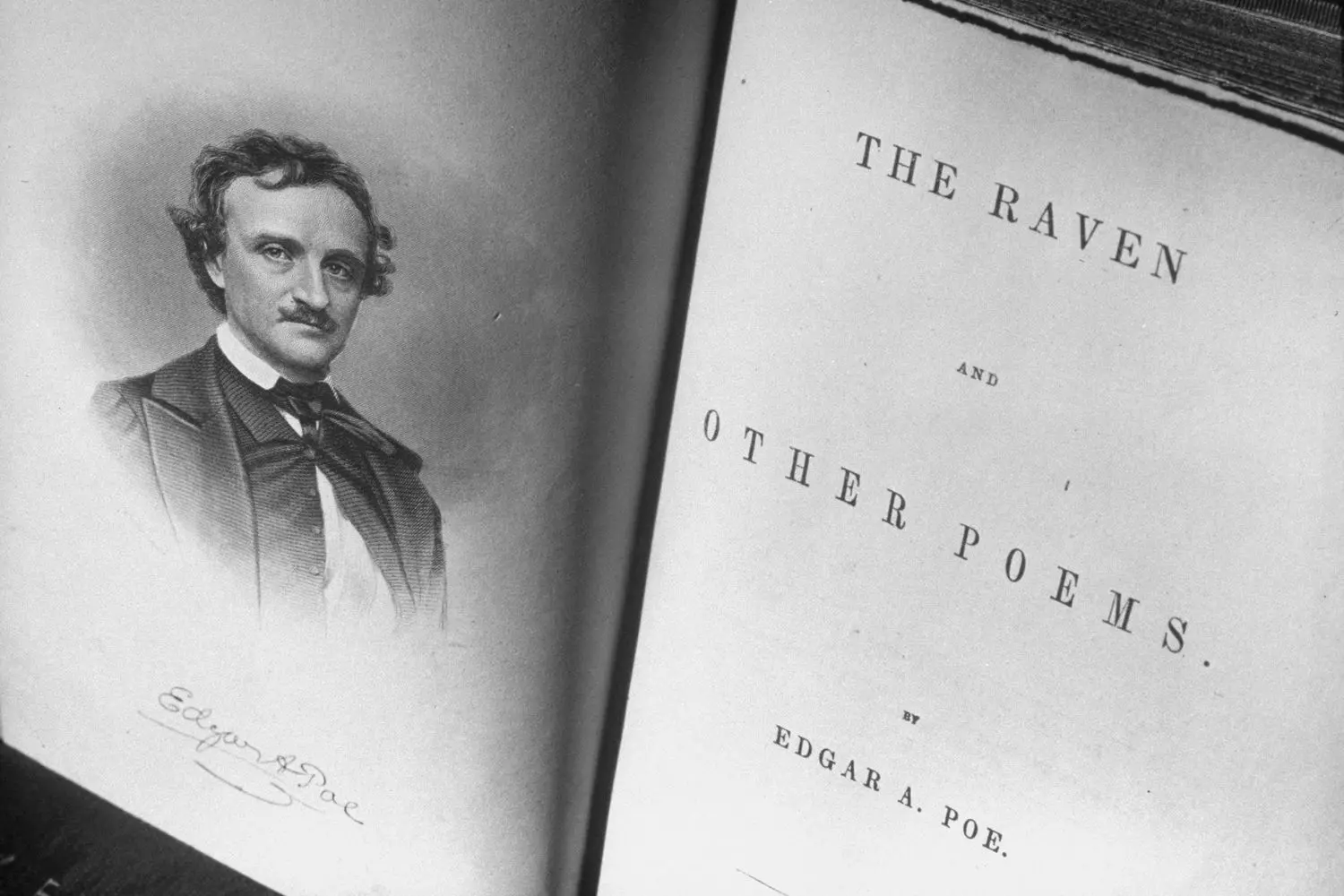
The Major Works of Edgar Allan Poe: Masterpieces That Changed Literature
Edgar Allan Poe left behind not just stories and poems, but true literary monuments that continue to stir the minds and hearts of readers worldwide. His work is a blend of gothic, mysticism, thrilling mysteries, and deep psychological exploration. Let’s take a closer look at the most famous works that made Poe a legend.
- 01. “The Raven” — a poem that spoke with the voice of death
If there were one thing by which most people recognize Edgar Poe, it would be his poem “The Raven.” First published in 1845, it instantly became a sensation.
It’s not just a poem — it’s a whole melody of grief and despair. The main character is a man who mourns the loss of his beloved Lenore in desperation. A mysterious bird — the raven — visits his room, repeating one word: “Nevermore.” This simple yet haunting refrain became a symbol of sorrow and irrevocable loss.
Poe created a unique atmosphere where every line echoes deeply in the reader’s soul. “The Raven” is not just a story, but an experience — a plunge into the dark depths of the soul. - 02. “The Fall of the House of Usher” — a gothic nightmare in detail
This story is the quintessence of gothic prose. Poe immerses us in a gloomy, almost lifeless mansion inhabited by the last descendants of the Usher family.
Here, the house seems like a living organism, its walls reflecting the decline of the family and reason. The story is full of symbols: the crumbling mansion, the duality of the siblings, darkness, and madness. Fun fact: Poe wrote this story in his youth, and it has become one of the most studied and adapted works in gothic literature.
“The Fall of the House of Usher” is not just a tale — it’s a dive into the fears and anxieties a person can feel when facing their destiny. - 03. “The Tell-Tale Heart” — the fear that beats inside
In this story, Poe explores the darkest corners of the human psyche. The narrator tells how he killed an old man because of his “vulture eye” — while trying to convince the reader of his sanity. But what is the scariest? Not the murder, but the eerie sound of the beating heart that begins to haunt the killer. It’s a metaphor for inner torment and guilt.
Here Poe masterfully shows how guilt can destroy the mind more than any external punishment. “The Tell-Tale Heart” is a classic of psychological horror where fear is born from within. - 04. “The Black Cat” — a story about the dark sides of the soul
“The Black Cat” is one of Poe’s most terrifying tales. The narrator recounts his gradual transformation from an ordinary man into a violent murderer under the influence of alcohol and madness.
The black cat in the story symbolizes a curse, as well as conscience and inevitable punishment. Poe skillfully shows how a person can be their own downfall. This story is not just a scary tale, but a deep exploration of the consequences of alcoholism and moral decay. - 05. “The Murders in the Rue Morgue” — the birth of the detective genre
In 1841, Edgar Poe gave the world the first-ever detective story — “The Murders in the Rue Morgue.” Here appears the first literary detective — C. Auguste Dupin, who uses logic and observation to solve the mysterious murder of two women. This story became the prototype for all subsequent detective stories — from Sherlock Holmes to modern thrillers.
Poe showed that investigation is an intellectual game where not only luck matters, but also attention to detail, analytical skills, and logical reasoning.
Each of these works is a separate world where fear, symbols, and philosophy intertwine. Edgar Allan Poe didn’t just tell scary stories — he looked deep into the human soul and revealed its vulnerability and strength. His work remains relevant and inspiring to this day because it addresses eternal themes that resonate with each of us.
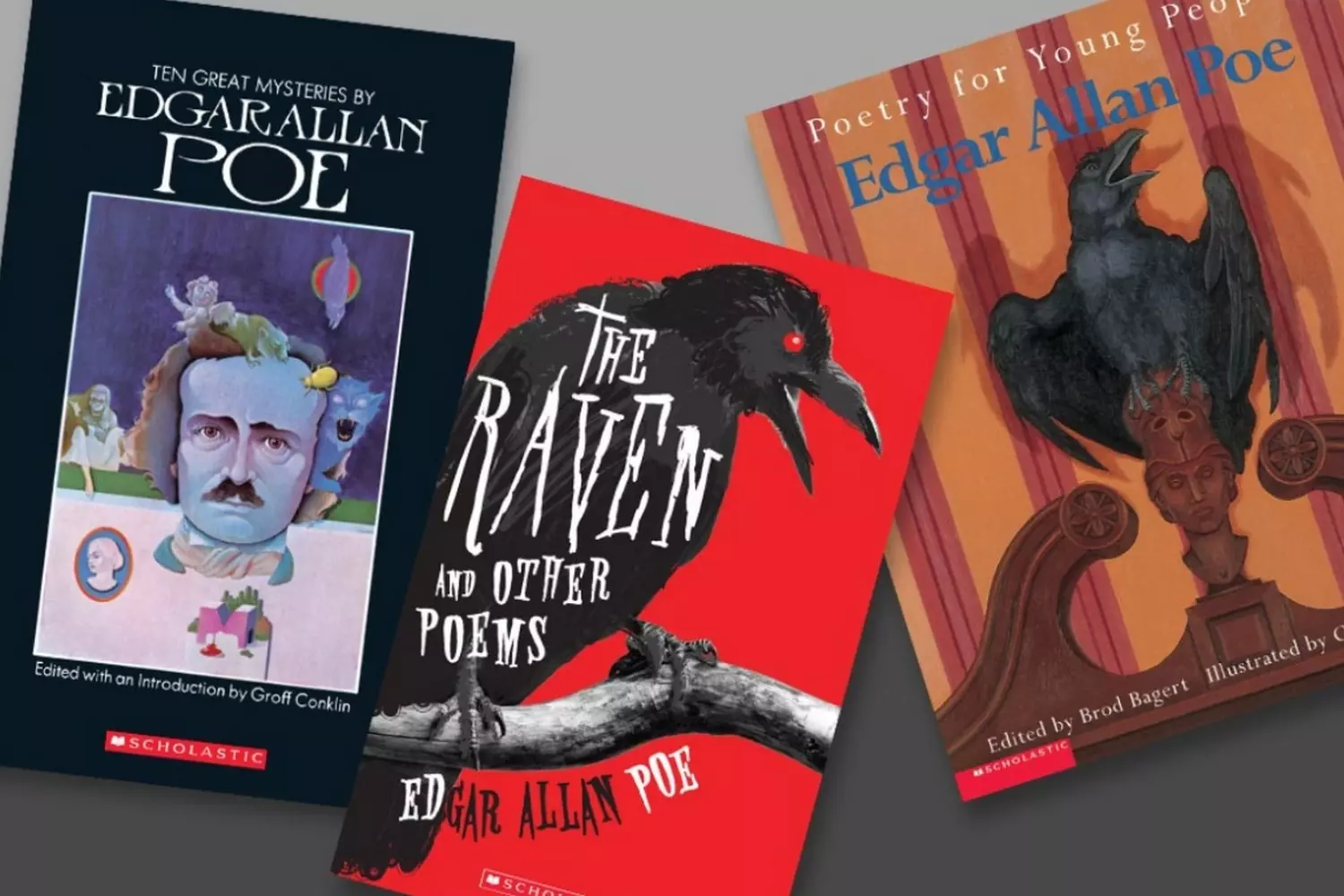
Themes and Motifs in the Works of Edgar Allan Poe: Madness, Death, and Duality
Edgar Allan Poe is not just the author of scary stories. Behind every word, behind every dark page, lies a profound philosophical meaning that explores the darkest corners of the human mind. Some of the main themes that run like a red thread throughout his work are madness, death, and duality. These are not mere plot devices, but true symbols that reveal the mysteries of our inner nature.
- 01. Death as philosophy, not just an event
For Poe, death is not merely the end of life. It is rather a state one can fall into while still alive—a spiritual decay, a loss of self. His characters seem to drown in their own death, losing touch with reality and reason. Death for them is a metaphor for disintegration, loss of control, and inner emptiness.
In his works, death often goes hand in hand with the destruction of the soul—be it in “The Fall of the House of Usher” or “The Raven,” where the characters experience not just physical loss, but an inner cataclysm. - 02. Madness as an inseparable part of human nature
Poe was among the first to depict madness not as something alien, but as part of the human being itself. His protagonists are people battling inner demons, losing the line between reality and illusion.
In stories like “The Tell-Tale Heart” and “The Black Cat,” the hero becomes a prisoner of his own mind, where fear and guilt take the form of relentless pursuers. Madness in Poe’s works is not only a tragedy but also a mirror in which everyone can see their hidden fears and doubts. - 03. Duality — the eternal struggle within us
One of Poe’s key ideas was duality. He showed that inside every person live contradictions that never cease:
- The living and the dead — the boundary between them is blurred and fragile; sometimes death seems nothing more than a state of the soul;
- Good and evil — not absolute categories, but mixed shades that coexist within every person;
- Love and fear — two sides of the same coin, which can simultaneously nourish and destroy each other.
It is precisely because of this duality that his works gain philosophical depth — they do not simply frighten, but make us ponder the nature of humanity and the world around us.
- 04. The subconscious horror — the fear that lives within us
Poe was the first to say that true horror is not in the darkness, not in ghosts or monsters, but within the human being—in their subconscious. His stories are not just horrors; they are mirrors that reveal our hidden fears, anxieties, and contradictions.
The fear born from inner demons is far stronger than external terrors. That is why his works remain relevant for so long — they speak to what lives inside each of us.
The themes of madness, death, and duality make Edgar Allan Poe’s work not just frightening, but profound, philosophical, and incredibly human. He showed that fear is something personal, internal, and that literature can become the very mirror in which we see both ourselves and our shadows.
Film Adaptations and the Cultural Influence of Edgar Allan Poe
Edgar Allan Poe’s name has long transcended the pages of his books. His dark, mysterious, and philosophical stories have inspired countless creators across eras and genres—from cinema and theater to music and comics. Poe has become a cultural phenomenon whose shadow stretches far beyond classic literature.
- 01. Theater and opera: mysticism and drama on stage
Poe’s work has not been overlooked by theatrical productions. His tales have formed the basis for numerous dramatic plays, operas, and even ballets. Theater pays special attention to the psychological depth of characters and the creation of a tense, mystical atmosphere. It is in theatrical adaptations that the subtle nuances of madness, fear, and love—so beloved by Poe—are revealed. - 02. Music: gothic, metal, and psychedelia under Poe’s influence
Edgar Allan Poe has inspired entire musical genres and legendary bands. This influence is especially evident in gothic and metal music:
- Iron Maiden dedicated several songs to Poe, including “Murders in the Rue Morgue”;
- The band The Alan Parsons Project released the album “Tales of Mystery and Imagination,” devoted to Poe’s works;
- Many performers in psychedelic and darkwave genres have drawn ideas from his imagery and texts.
- 03. Comics and graphic novels: Poe in panels and colors
Poe has also attracted the attention of comic book authors. Characters and storylines inspired by Poe’s works have appeared repeatedly in Marvel, DC, and other publishers. His dark stories and symbolism perfectly suit visual storytelling filled with dramatic contrasts of light and darkness, internal conflicts, and grim plot twists.
Cinematic obsession: how Edgar Poe conquered the screen
Edgar Allan Poe is the only writer whose works have been adapted from the earliest days of cinema up to the Netflix era. His gothic stories, steeped in madness and death, became the perfect ground for experimentation: from silent films with rat actors to psychedelic thrillers and dark animated masterpieces. Here is how Poe became the main “supplier” of cult scenes for Hollywood and beyond.
- 01. Silent cinema: the first steps into eternity
- 1913
The Student of Prague (based on “William Wilson”) became the first arthouse film in history and a precursor to German Expressionism. Actor Paul Wegener played a doppelgänger whose reflection escaped from a mirror — the trick was filmed using double exposure, which was revolutionary for cinema. - 1928
French avant-gardist Jean Epstein filmed The Fall of the House of Usher, incorporating elements from The Oval Portrait. The flickering images of Roderick Usher’s wife foreshadowed the surrealism of Dalí and Buñuel.
- 02. The Golden Era of Universal: Poe vs Dracula
In the 1930s, Universal released Dracula and Frankenstein, and decided to “recharge” Poe:
- The Black Cat (1934)
Bela Lugosi and Boris Karloff played satanists who walled up their victims alive. The film had nothing to do with the original story but became cult thanks to the scene with skin peeled off alive. - The Raven (1935)
Lugosi played a mad surgeon who resurrects the dead. Poe’s poem is just the title here, but the film set a trend for “free interpretations.”
- 03. The Roger Corman era: Vincent Price and gothic camp
In the 1960s, director Roger Corman made 8 films based on Poe, creating the “canon” of gothic horror:
- The House of Usher (1960)
Vincent Price as Roderick Usher, whose family crypt hid a living sister. Fog, cracked walls, and “screaming” portraits became hallmarks of the style. - The Masque of the Red Death (1964)
Price as a satanist aristocrat who staged an orgy during the plague. The film was shot in 15 days but its visuals even inspired Kubrick.
- 04. Italian thriller and Japanese anime: Poe without borders
- Your Vice Is a Locked Room (1972)
Italian giallo inspired by The Black Cat. Added a lesbian love story, motorcycle races, and bloody sickle murders. - The Raven in The Simpsons (1990)
James Earl Jones narrated the poem, with Bart as the raven teasing Homer. The parody became cult and started a tradition of “spooky specials.”
- 05. 21st century: Netflix, animation, and the Edgar detective
- Extraordinary Tales (2015)
An animated anthology where The Tell-Tale Heart was read by Christopher Lee, and The Masque of the Red Death was silent, set to Chopin’s music. - The Fall of the House of Usher (2023)
Mike Flanagan’s series turned the Usher family into drug barons, weaving 10 Poe stories into the plot. The main villain here is not ghosts, but the opioid crisis.
Why is Poe unbeatable in cinema?
- Short stories
Directors can “expand” motives, as in The Masque of the Red Death, where satanism was added. - Visual power
Images of ravens, pendulums, and being buried alive work without words. - Eternal themes
Madness, guilt, and reckoning are relevant in any era.
As Guillermo del Toro said: “Poe is the DNA of modern horror. Even bad adaptations of his stories leave a mark.”
Edgar Allan Poe is not just a 19th-century writer but an eternal source of inspiration for countless genres and artistic directions. His work lives on, evolves, resonates with new forms of expression, and continues to move millions of hearts worldwide.

The Poe House, Museums, and Literary Tourism: A Step Towards Gothic America
If you have ever dreamed of touching the secrets of Gothic literature, feeling the atmosphere of a dark genius, and walking through the places where one of the greatest masters of mysticism — Edgar Allan Poe — lived and created, then a journey through his homes and museums in the USA is what will offer a true immersion into the era and personality of the great writer.
- 01. Literary locations: traveling in Poe’s footsteps
Although Edgar Poe lived a relatively short life and moved frequently, several places in the USA have become true shrines for fans of his work and researchers.
- The House Museum in Baltimore
Baltimore is the city Poe called home during various periods of his life. The house where he lived has now been turned into a museum that holds original manuscripts, personal belongings, first editions of his books, and letters. Tours here help to understand not only the writer’s biography but also the era he lived in. - The Historic Poe Museum District in Richmond
Richmond is the city where Poe spent part of his youth. The museum is located in an 18th-century house surrounded by the atmosphere of old America. Literary evenings, poetry readings, and interactive quests based on his works take place here. This place is especially valuable for those who want to feel the spirit of the time and the Gothic atmosphere. - Poe’s Tomb at Westminster Hall Cemetery
The final resting place of Poe is located in Baltimore. Westminster Hall Cemetery is not just a memorial but part of the story connected to the mysterious death of the writer. Many fans from all over the world come here to honor the memory of the master of mysticism.
- 02. Features of tourism following Edgar Poe’s footsteps
Such tours are not just walks through historic places. They offer the opportunity to:
- Immerse yourself in the atmosphere of the 19th century, when Gothic and Romanticism were at their peak popularity.
- Learn little-known facts from Poe’s life that you won’t find in textbooks.
- Take part in themed quests, literary evenings, and master classes.
- Visit exhibitions of rare editions and artifacts related to the writer’s work.
For many, such a journey becomes a real discovery and inspiration, as it not only broadens horizons but also gives deep emotions from touching history.
Interesting fact: Did you know that every October in Baltimore the “Edgar Allan Poe Festival” is held — several days of mystical tours, theatrical performances, and literary readings dedicated to the life and work of the writer? This event attracts fans from all over the world and helps preserve the memory of the great master of Gothic literature.
For true fans of mysticism and Gothic literature, traveling through Edgar Allan Poe’s homes and museums is an opportunity to look into the heart of 19th-century American literature. Each place tells its unique story, immerses in secrets, and creates a feeling of belonging to a great legacy.
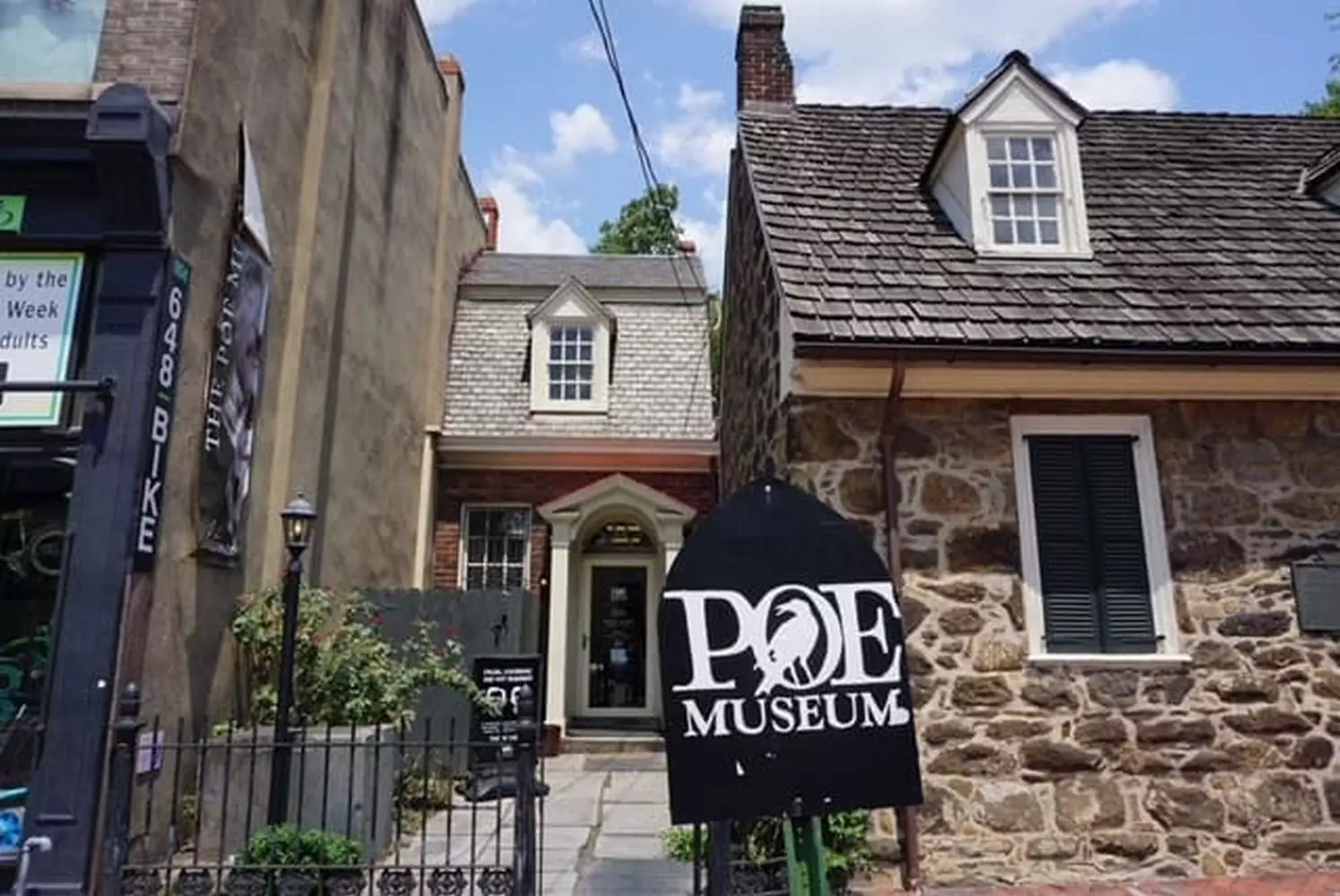
Why Edgar Allan Poe Is Still Read Today: The Fear of Life and the Mirror of the Soul
It has been almost two centuries since Edgar Allan Poe first took up the pen to bring his dark visions to paper, yet his work remains relevant and captivating to this day. Why do we continue to read this author? What is the secret of his immortality?
Poe didn’t simply write about death — he was fascinated by the fear of life. His stories are not just scary tales meant to frighten or entertain horror fans. He delved into the depths of human emotions and fears familiar to each of us. Fear of loneliness, the dread of losing loved ones, despair, madness — these are the themes at the core of many of his works.
Long before psychology emerged and it became fashionable to discuss the subconscious, Poe spoke the language of feelings and inner conflicts. His characters are not just horror figures but living people confronting the horrors of their own minds and the world around them.
He didn’t entertain readers with bloody scenes — he revealed the essence of the human soul, its dark corners, and internal storms. This is where his uniqueness and power lie.
Who should read Edgar Poe today?
If you are still unfamiliar with this genius or want to see him from a new perspective, here are some reasons why Poe could become your number one author:
- For those seeking true Gothic literature, free from clichés
Poe created an atmosphere where darkness and mysticism were not just a backdrop but a reflection of the inner world of his characters. His Gothic is a subtle psychological portrait, not just scary stories. - For fans of Lovecraft, King, and Burton
If you enjoy modern horror stories, you should understand the roots of the genre. Poe is one of those who laid the foundations of what we now call horror, inspiring many great authors and directors. - For lovers of dark poetry and mysteries
His poems and tales are mystical riddles; every line is filled with meaning and emotion waiting to be unraveled. - For connoisseurs of subtle psychology
Poe was a master at penetrating the depths of the human soul. His works explore fear, guilt, madness, and loneliness. - For those seeking depth in every word
Poe’s texts are not just stories; they are philosophical reflections on life and death, love and fear, reason and madness.
Reading Edgar Allan Poe is a journey into the depths of the human soul and fears that live in each of us. His work remains alive today because he spoke a universal language of emotions and philosophy that resonates through all times.

Edgar Poe: A Few Facts That Will Shock Even His Fans
Edgar Allan Poe was not just an author of dark tales and the father of the detective genre. His life was full of mysteries, tragedies, and incredible coincidences that sometimes seemed like plots from his own works. Alcohol, mysticism, predictions of the future, and even eerie prophecies — these are just some of the things that make Poe’s biography as captivating as his books.
- 01. The prophecy of Richard Parker
In The Narrative of Arthur Gordon Pym (1838), Poe described how shipwrecked sailors kill and eat a cabin boy named Richard Parker. The chilling fact: in 1884, a nearly identical tragedy occurred in reality — surviving sailors actually ate a crew member with the same name. - 02. “Eureka” — the poem that predicted the Big Bang
In 1848, Poe wrote the philosophical poem Eureka, in which he proposed the idea that the Universe was born from a single explosion and is constantly expanding. Scientists came to a similar conclusion only in 1927, naming it the Big Bang theory. - 03. The Raven, which brought fame and $9
The poem The Raven (1845) made Poe famous, but the payment was only 9 dollars. The irony is that today it is one of the most quoted works in history. - 04. He wrote a textbook on... mollusks
Few know that Poe seriously studied science and in 1839 published The Conchologist’s First Book. Later it turned out to be a compilation (essentially plagiarism), but the book nevertheless became a bestseller! - 05. Other writers hated him
Mark Twain called Poe “talentless,” Walt Whitman considered him “too artificial,” and Henry James even said that “admiring Poe is a sign of a primitive mind.” The irony is that today Poe is considered one of the greatest American writers, while his critics are just “second-tier authors.” - 06. Reluctant cryptographer
While serving in the army, Poe became fascinated with ciphers and created such complex encoding systems that modern cryptographers are still puzzled by some of his undeciphered writings. In 1841, he even held a public contest in a newspaper, inviting readers to send their ciphers — he cracked most of them within hours. - 07. Ghost in court
After Poe’s death, his mother-in-law sued... his ghost! She claimed the spirit of the writer kept her awake by knocking bones on the floor. The judge, a Poe fan himself, seriously considered the case but ruled “no crime committed.” - 08. The world’s first cyberpunk author?
In 1840, Poe wrote the story "The Man That Was Used Up", which described a mechanical man with a “brass Adam’s apple” and “glass eyes.” This proto-cyborg, 180 years before the cyberpunk genre appeared, anticipated ideas of artificial intelligence. - 09. The godfather of Forbes?
In 1845, Poe developed a business model for the magazine The Stylus, proposing an early version of a wealthy people ranking — 50 years before the first Forbes list. The magazine never launched, but his financial notes are studied at Harvard Business School. - 10. The curse of the death mask
Only 12 copies were made from Poe’s plaster death mask. Owners of 9 of them died under strange circumstances. The latest case was in 2015, when a collector died in a car accident while transporting the mask.
Why does this matter? These facts prove that Poe was not just a writer, but a visionary whose ideas were centuries ahead of his time. His legacy continues to reveal new facets — perhaps the most incredible secrets are still ahead...

Walk Through the Darkness That Illuminates the Path with American Butler
Poe was a broken man, yet he gave the world an entire universe of literary horror. He suffered so that we could feel. He died so that his voice would echo forever. In every darkness, in every shadow, there is a glimmer of his pen.
If you want to touch Edgar Poe’s legacy not only through pages but in real life — come to the USA with American Butler.
We organize personalized literary tours tracing the paths of great writers. You will see the streets he walked, the houses where he created, and the grave that holds his silence and mysteries.




































